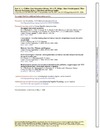Please use this identifier to cite or link to this item:
https://accedacris.ulpgc.es/jspui/handle/10553/6589
| Title: | Cardiac output and leg and arm blood flow during incremental exercise to exhaustion on the cycle ergometer | Authors: | Calbet, Jose A. L. González-Alonso, J. Helge, J. Sondergaard, H. Munch-Andersen, Thor Boushel, R. Saltin, Bengt |
UNESCO Clasification: | 241106 Fisiología del ejercicio | Keywords: | Cardiac output Ergometry Exercise Human Blood flow |
Issue Date: | 2007 | Journal: | Journal of Applied Physiology | Abstract: | To determine central and peripheral hemodynamic responses to upright leg cycling exercise, nine physically active men underwent measurements of arterial blood pressure and gases, as well as femoral and subclavian vein blood flows and gases during incremental exercise to exhaustion (Wmax). Cardiac output (CO) and leg blood flow (BF) increased in parallel with exercise intensity. In contrast, arm BF remained at 0.8 l/min during submaximal exercise, increasing to 1.2 +/- 0.2 l/min at maximal exercise (P < 0.05) when arm O(2) extraction reached 73 +/- 3%. The leg received a greater percentage of the CO with exercise intensity, reaching a value close to 70% at 64% of Wmax, which was maintained until exhaustion. The percentage of CO perfusing the trunk decreased with exercise intensity to 21% at Wmax, i.e., to approximately 5.5 l/min. For a given local Vo(2), leg vascular conductance (VC) was five- to sixfold higher than arm VC, despite marked hemoglobin deoxygenation in the subclavian vein. At peak exercise, arm VC was not significantly different than at rest. Leg Vo(2) represented approximately 84% of the whole body Vo(2) at intensities ranging from 38 to 100% of Wmax. Arm Vo(2) contributed between 7 and 10% to the whole body Vo(2). From 20 to 100% of Wmax, the trunk Vo(2) (including the gluteus muscles) represented between 14 and 15% of the whole body Vo(2). In summary, vasoconstrictor signals efficiently oppose the vasodilatory metabolites in the arms, suggesting that during whole body exercise in the upright position blood flow is differentially regulated in the upper and lower extremities. | URI: | https://accedacris.ulpgc.es/handle/10553/6589 | ISSN: | 8750-7587 | DOI: | 10.1152/japplphysiol.01281.2006 | Source: | Journal Of Applied Physiology[ISSN 8750-7587],v. 103 (3), p. 969-978 |
| Appears in Collections: | Artículos |
Show full item record
SCOPUSTM
Citations
147
checked on Jun 8, 2025
WEB OF SCIENCETM
Citations
140
checked on Jun 8, 2025
Page view(s)
73
checked on May 19, 2024
Download(s)
456
checked on May 19, 2024
Google ScholarTM
Check
Altmetric
Share
Export metadata
This item is licensed under a Creative Commons License

